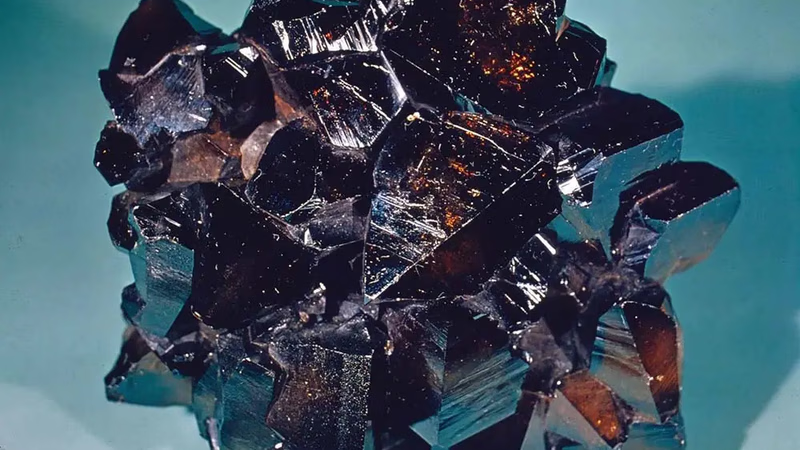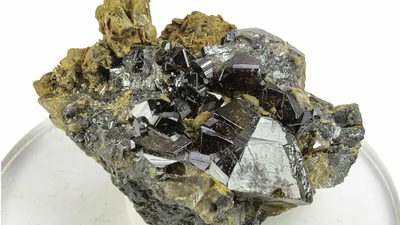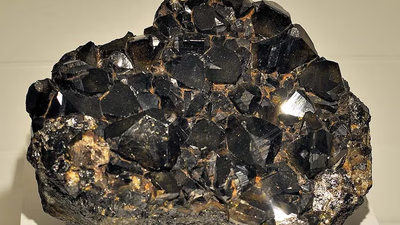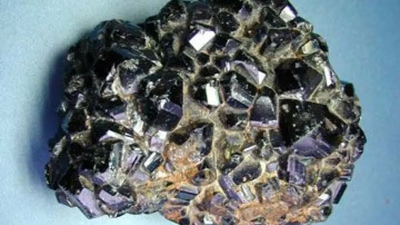
Cassiterite: A key mineral for electronics and automotive industries.
Cassiterite is one of the important minerals that has a great value in world trade. This mineral is used as the main source of tin metal production in various industries and plays a vital role in the production of tin batteries, tin alloys, glass industries, electronic industries and other industries. As the main source of tin metal production, cassiterite meets the needs of various industries. These needs include the production of tin batteries for the automotive industry and power systems, use in the electronic industry for the production of electronic components, and the glass industry for the production of special glasses.
The demand for cassiterite in the world markets is very high. Various industries around the world need cassiterite to meet their needs for tin and its derived products. The increasing demand for tin batteries in the automotive and high-tech industries, as well as the growth of the electronics and glass industries in emerging markets, are among the factors that have stimulated the demand for cassiterite. The price of cassiterite in the global market is affected by supply and demand. If the supply decreases or the demand increases, the price of cassiterite will increase, and conversely, if the supply increases or the demand decreases, the price of cassiterite will decrease.
China is one of the largest consumers of cassiterite in the world. This country is highly dependent on cassiterite to meet its needs for tin and its derived products. Therefore, China is an important target market for cassiterite exports. America is also one of the largest consumers of cassiterite and needs cassiterite to meet the needs of its industries for tin and products derived from it. The American market is also an important target for cassiterite exports. Japan is another important country in cassiterite trade. Japan's electronics, automotive, and glass industries need cassiterite to produce their products.
South Korea is also a target market for cassiterite exports. This country has a great need for cassiterite due to the production of tin batteries, electronic industries and automobile manufacturing. European markets are also important in cassiterite trade. Countries like Germany, France, Italy and the UK have strong industries and need cassiterite to produce their products. India is also one of the important markets for the export of cassiterite in terms of demand and consumption. Automotive, electronics and battery industries in India need cassiterite. The cassiterite export markets include countries that use it in the tin industry and products derived from it and need cassiterite to produce their products.
A number of countries with rich cassiterite deposits may impose restrictions on the export of cassiterite. These restrictions may be imposed to preserve domestic resources, develop domestic industries, or regulate domestic markets. These restrictions can have an impact on the supply and price of cassiterite in the global market. Cassitrite is a valuable and vital resource in world trade and has a great value. Its price and supply in the world market are affected by various factors, including supply and demand, supply constraints, and trade policies of producing countries.
-

Cassiterite, a tin-bearing mineral, is predominantly produced in China, Australia, and Brazil. China leads global production while also importing cassiterite for various industries including steelmaking and electronics. Significant mining regions include Yunnan and Jiangxi in China, Western Australia, and Roraima in Brazil. Other notable producers are Russia and Bolivia, with key mining areas in Khabarovsk and Potosi respectively. The extraction process involves identifying geological indicators such as specific rock types and using geophysical methods to locate deposits. Cassiterite is typically sold as a concentrate rather than raw ore, undergoing processing that includes grinding and chemical treatments to separate valuable minerals. This processed material is essential for industries like glassmaking and battery production. The demand for cassiterite is influenced by domestic consumption capabilities and international market needs, with major exporting countries focusing on meeting the requirements of larger industrial sectors.
-

Cassiterite supply and demand in West Asia is shaped by key players like Iran and Syria as suppliers, while Saudi Arabia, Turkey, and Iraq are major consumers. The region"s cassiterite is primarily used in the form of tin metal due to its favorable properties for various industries, including automotive and electronics. Pricing is influenced by factors such as concentration levels, global market demand, extraction costs, and regional economic conditions. High-concentration cassiterite tends to be cheaper due to lower volume requirements for tin extraction. Countries like Iran have advanced refining technologies and significant resources, enabling them to meet local industrial needs while also exporting tin. Syria also contributes with rich cassiterite mines supporting its metalworking and electronic sectors. Meanwhile, Saudi Arabia and Turkey are notable consumers with diverse industrial applications for cassiterite. Iraq similarly utilizes this mineral across various sectors.
The Middle East"s ability to refine cassiterite into tin allows for both domestic use and export opportunities. Overall, the interplay of supply dynamics, technological capabilities, and market demands shapes the cassiterite landscape in West Asia.
-

Cassiterite, primarily composed of tin oxide, forms through various geological processes including magmatic activity and hydrothermal processes. The formation involves cooling magmas rich in tin and the deposition of minerals from hot water. Geological conditions such as sedimentation, temperature changes, and tectonic activity play crucial roles in cassiterite"s development. Extracting tin from cassiterite typically employs flotation and electrostatic separation methods. The ore is crushed to facilitate processing, followed by chemical refining to achieve desired purity levels. Tin"s applications are extensive; it is vital in construction materials, alloys like bronze, and battery production. Its resistance to corrosion makes it essential for automotive parts and electronic devices. The extraction process is complex and influenced by environmental and economic factors.
-

Cassiterite is a crucial mineral in global trade, primarily serving as the main source of tin for various industries, including automotive, electronics, and glass manufacturing. The increasing demand for tin batteries and electronic components has significantly boosted the need for cassiterite. Major consumers include China, the United States, Japan, South Korea, and several European countries. The price of cassiterite is influenced by market dynamics; a decrease in supply or an increase in demand leads to higher prices, while the opposite results in lower prices. Countries rich in cassiterite deposits may impose export restrictions to protect domestic resources and industries, impacting global supply and pricing. As a vital resource in world trade, cassiterite"s value is shaped by these factors. "




